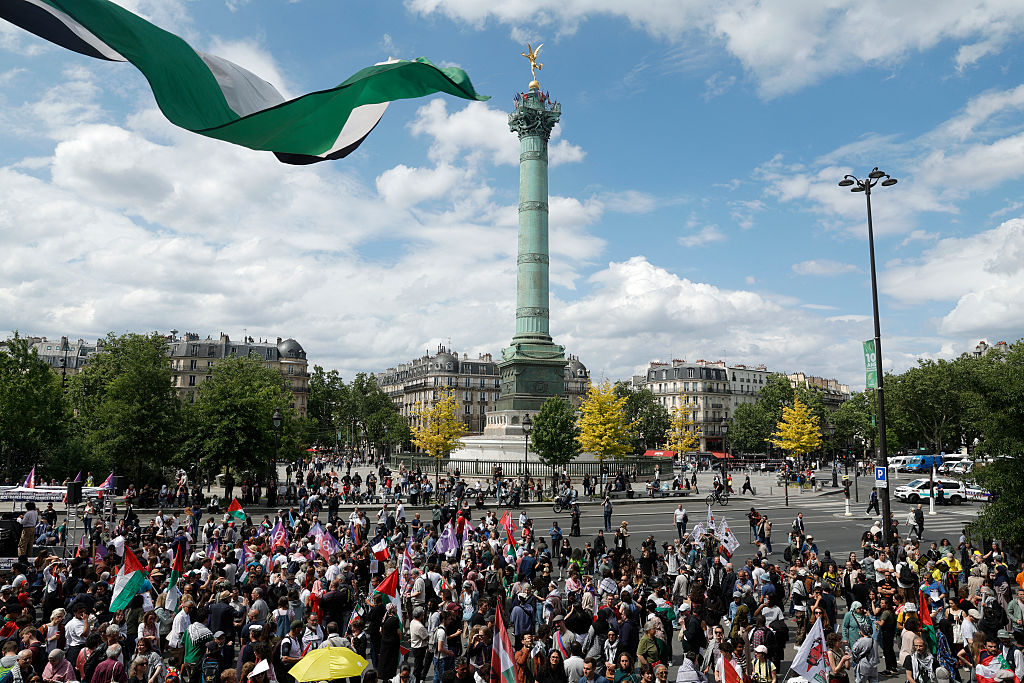In all the argle-bargle over Donald Trump’s proposal for Gaza, there have been countless questions about legality, morality and feasibility. Isn’t the population transfer he suggests tantamount to ethnic cleansing? On what legal basis would the United States assert sovereignty over Gaza and enter into contracts with developers and investors? How could a country that fought a revolutionary war in the same of self-determination tell Gazans they must leave territory on which their families have been settled for generations? How would a redeveloped Gaza be paid for, governed, policed and populated? Would the Palestinians themselves benefit from it?
There is another question, a practical one, that seems to have been overlooked in all this: what about Judea and Samaria? The historical Jewish territory, which lies on Israel’s eastern front, was annexed by Jordan in 1950 and renamed ‘the West Bank’. Today it is home to half a million Jews and three million Arabs, three-fifths of the Palestinian population, scattered across hills and valleys in heavily guarded conurbations, Israeli here and Palestinian there. It is home also to Ramallah, the de facto capital of the Palestinian Authority, and to the civil infrastructure of Palestinian government, such as it is.
Western observers tend to think of Gaza as the hotbed of Palestinian extremism, controlled as it is by Hamas, and the West Bank as the more moderate, secular, quasi-westernised territory. This is a product of the diplomatic fictions, fashioned by the Americans and hewed to by the Brits and the Europeans, that the Palestinian Authority is a) a body capable of governing the Palestinians competently, and b) in possession of either the will or the legitimacy to lead the Palestinians to peace with Israel. In truth, the Palestinian Authority is a weak dictatorship – the worst kind – which enjoys limited popular backing and would be vulnerable to paramilitary challenge.
As a result of this weakness, Hamas and other terrorist organisations such as the Lion’s Den have growing footholds in the Palestinian areas of the West Bank. The civilian population that lives there has displayed escalating levels of extremism of late, especially in the wake of 7 October, when polls showed higher levels of support for the massacre in the West Bank than in Gaza itself. Mahmoud Abbas, the Palestinian Authority’s dictator, is despised, ineffectual and turning 90 this year. Popular replacements include Marwan Bargouthi and his cousin Mustafa, the latter being considered the more moderate candidate since, unlike his cousin, he hasn’t been convicted on five counts of murder. If Gaza is a catastrophe, the West Bank is one heartbeat, bullet or factional dispute away from joining it.
Which is why Judea and Samaria has to be factored into Donald Trump’s Gaza plan. Whether the president sincerely wants to transfer the Arabs out of the Strip, like a goyish Meir Kahane, or is simply taking a hardline position to frighten Arab leaders into sorting out Gaza themselves, the response in Ramallah, Nablus, Jenin, Hebron and the rest of the Palestinian Authority will be important. Any attempt to uproot Gazans by force would be legally and morally offensive, and would succeed only in reinforcing Palestinian nationalist sentiment. Physical resistance would be likely to manifest not only in Gaza but in the West Bank, too. This could take the form of lone wolf terror attacks against Israelis and/or Americans or more organised operations that the US-trained Palestinian security forces would have to prevent or suppress. Were Abbas to offer nothing more than rhetoric while al-Jazeera carried live images of Gazans being transported to the Sinai or Jordan, his grip on power might well be challenged and not necessarily at a ballot box.
Even if depopulating and redeveloping Gaza is nothing more than a negotiating tactic, a question mark hangs over the future of the West Bank. Say Trump’s gambit spooks the Arab states and they manage to push Hamas out, the two territories would still have to reconcile, elect a leadership palatable to both, and undertake an expensive rebuild of Gaza. All this might be possible, with a lot of pressure and a lot of cash from the Arab world, but what would it achieve beyond returning the Palestinians to the status quo ante the 2006 Hamas-Fatah schism? Perhaps a new leadership would emerge that had learned from decades of self-inflicted harm and was finally prepared to make peace with Israel, but given the number of opportunities the Palestinian side has spurned the grounds for optimism are thin.
Planning for Gaza’s future without taking the West Bank into account is like turning up to a house fire and only dousing the flames in one room. If Donald Trump wants to be the president who brings peace to the Middle East, it won’t be enough to scare Arab states into doing his bidding in Gaza. He will need to convince Palestinians across the territories that generations of rejectionism has only prolonged their dispossession and denied a future to their children. Trump might be able to change the dynamic of the Israeli-Palestinian conflict but he cannot bring it to an end without a Palestinian side that is prepared to exchange resistance for self-determination and make peace with Israel. Which brings us to the biggest question of all, one that applies to Palestinians in both Gaza and the West Bank: after decades of No, are they finally ready to say Yes?








Comments